Herbicide-resistant weeds have spurred development of new chemistries, such as its Kixor stable of PPO inhibitor herbicides it launched earlier this decade.
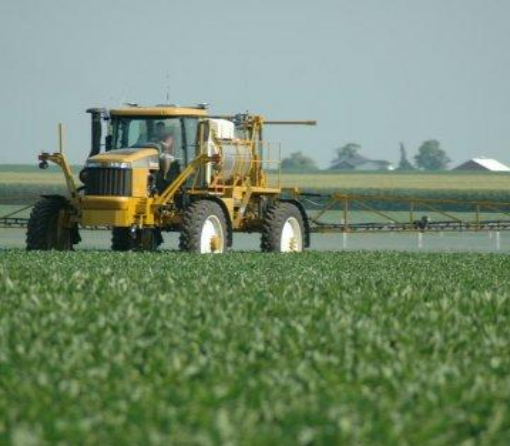
“The herbicide market is going through significant and rapid change that is driven by weed resistance,” Markus Heldt, president of BASF’s crop protection division. “Initially it was in North America, but now it is a global issue. Some existing herbicide programs are no longer working. That is the reality of Mother Nature.” BASF executives said at the firm’s annual media conference earlier this month in Limburgerhof, Germany, that the herbicide market for corn and soybeans looked dicey when the Roundup Ready system gave flawless weed control earlier last decade. “Companies slowed down research for a new (herbicide) mode of action,” says Jordi Tormo, vice president of global research herbicides and biological services for BASF.
Holes first started appearing in the Roundup Ready system in 2000, when University of Delaware scientists confirmed glyphosate-resistant marestail. Glyphosate-resistant weeds soon steamrolled through the South and mid-South and are now threatening Midwestern corn and soybeans. The last corn and soybean herbicides with a new mode of action were the HPPD inhibitors that were first commercialized in the late 1990s (Callisto). Since then, no new modes of action for row crop herbicides have surfaced. That may be changing, though. Tormo says odds are by the end of this decade or the start of next one, a new corn and soybean herbicide mode of action may be discovered. “Companies, including us, are working on new modes of action,” he says.
Widespread weed resistance to glyphosate (the herbicide used in the Roundup Ready system) may have surprised farmers, but not the scientific community, he says. “It was a matter of time,” says Tormo. “Nature is very intelligent. When you overload a field with one specific chemistry, you are going to have resistance. What was a surprise for us was the speed of (resistance) development across the United States.” That’s also the case worldwide. “There are big glyphosate-resistance problems in Brazil, due to overuse of the Roundup Ready system,” he says. Nor is resistance limited to just glyphosate. “ALS (inhibitor) resistance is a huge problem in cereals in the EU (European Union),” he says.
One current step farmers can take is to rotate existing herbicide modes of action in combination to manage resistance. BASF’s offerings, for example, include growth regulators like dicamba (Clarity). Impact is an HPPD inhibitor mode of action. BASF’s Kixor herbicides are PPO inhibitors. Meanwhile, Pursuit is an ALS inhibitor herbicide. “Right now, farmers have tools in the (weed management) toolbox,” says Heldt. “We want farmers to use them more intelligently and with more flexibility.”s
Australian growers have “wholeheartedly” embraced the concept of killing weeds during harvest, said an Australian weed scientist. “We estimate that 70 percent of (Western Australian) growers are using a harvest weed seed control system,” said Michael Walsh of the University of Western Australia. “Across the rest of Australia the adoption rates are probably in the order of 20 to 30 percent.” Walsh, the lead author of a paper on weed seed control published in a recent edition of Weed Technology, said more Western Australian growers are collecting and destroying weed seeds at harvest because of herbicide resistance.
The adoption rates reflect the levels of herbicide resistance in the respective regions,” Walsh said in an email. “The extent of herbicide resistance is far greater in Western Australia.” According to Walsh’s paper, Australian growers are using and studying several methods to kill weed seeds during harvest. Most growers have adopted a system in which a mounted chute on the combine places the chaff and weed residues in a narrow row. Growers then burn the rows. This has been shown to kill nearly all of the annual ryegrass and wild radish seed in the residue. Walsh and his colleagues, in collaboration with a Western Australian farmer, have developed a more sophisticated method to eradicate weed seed at harvest. They have built a machine called the Harrington Seed Destructor. It trails behind the combine and crushes weed seeds within the chaff.
As noted on the Western Australia University website, the Destructor is based on mining technology. A cage mill pulverizes the seeds within the chaff. “What they’re doing, rather than modifying the combine harvester, they’ve got basically a portable mill behind (the combine) and they’re grinding stuff up,” said Adam Davis, a University of Illinois crop science associate professor and U.S. Department of Agriculture scientist. Australian data show that the machine demolishes at least 95 percent of the annual ryegrass, wild radish, wild oat and brome grass seed present in the chaff. De Bruin engineering is now producing the Harrington Seed Destructor, but it isn’t cheap, costing approximately $240,000 Aus. Australian farmers might be willing to tow a weed seed mill behind their combine, but Davis said North American farmers aren’t ready for the technology. “That won’t work here,” he said. “It wouldn’t be adopted.” Most American growers in the U.S. Midwest manage thousands of acres with little or no help. Davis said they’re not going to combine more slowly to pull a cart or hire someone to empty a trailer of chaff and ground up weed seed. “They (growers) have just enough labor to scrape by. These guys are flying over their ground when they’re harvesting. They don’t want to slow down.” Addressing the issue is a new version called the Integrated Weed Destructor. Pair of mills mounted on the combine do the job, taking material from the main sieve.
Davis said Australian farmers and scientists are more interested in weed seed control because they have no choice. “I think what happened in Australia is that herbicide resistance forced the issue. They ran out of options,” he said. “They realized that herbicide resistant weeds were the ones going to seed at the end of the season, and they had to do something about that.” Despite his reservations, Davis said there’s no doubt that the Australian approach works. Walsh’s long-term study has demonstrated that mechanical weed seed collection and destruction at harvest, in combination with herbicide use, can drive weed populations to extremely low levels. “Targeting of weed seed production to restrict population densities … not only has production benefits but importantly reduces the potential for resistance evolution to our remaining highly valued herbicide resources,” Walsh wrote in his paper. For example, the scientists studied a field that had 35 annual ryegrass weeds per sq. metre. Annual ryegrass counts dropped to 0.5 plants per sq. metre after 10 years of harvest weed seed control, in combination with herbicides. In plots treated only with herbicide, the annual ryegrass densities dropped to four plants per sq. metre. Walsh said it’s uncertain if the Harrington Seed Destructor and other Australian approaches would work on North America weeds. “This is the big question at the moment. These systems rely on high proportions of weed seed retention at crop maturity (harvest) at a height that allows these seeds to be collected during a commercial harvest operation,” he said. “We have data that indicates these systems will be effective on palmer amaranth. We intend to conduct more studies in the U.S. over the next couple of years.”
Fertilizer applied today could still be there in 2093, scientists report October 21 in the Proceedings of the National Academy of Sciences. The study is the first to measure how long nitrogen-based fertilizers persist in the field. In 1982, a team led by Mathieu Sebilo of the Université Pierre et Marie Curie in Paris infused soil with fertilizer containing nitrogen-15, a form of the element uncommon in nature. The next year, the researchers found that crops had absorbed around half of the fertilizer, with most of the rest taken up by microorganisms and released back into the soil.
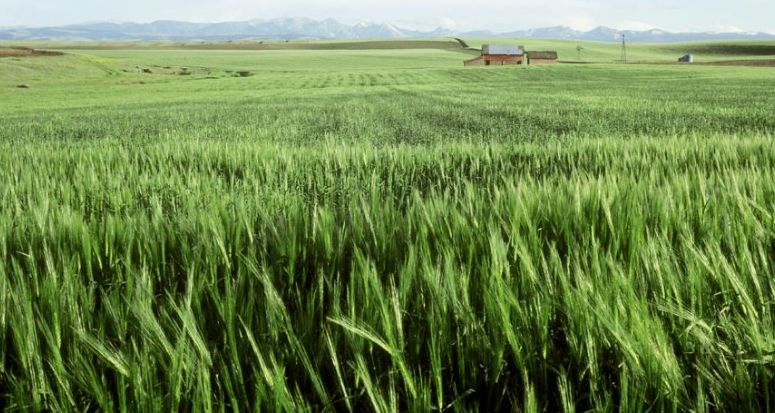
For the next 30 years, the scientists grew sugar beets and winter wheat and fertilized them with compounds containing the more common nitrogen-14. They found that nitrogen-15 in the soil decreased slowly, with small amounts taken up by plants or leached into groundwater each year. In 2010, 12 to 15 percent of the original nitrogen-15 remained in the soil; the researchers calculate that it will take at least another 50 years for it to disappear entirely. The finding helps explain why nitrogen pollution can continue in rivers even when farmers in the area reduce their fertilizer use.
Honeybees and native bees forage in and near soybean and cornfields, especially during dry weather. When treatment decisions are being made for pests of these crops, it is important to consider minimizing the risk to these pollinators.
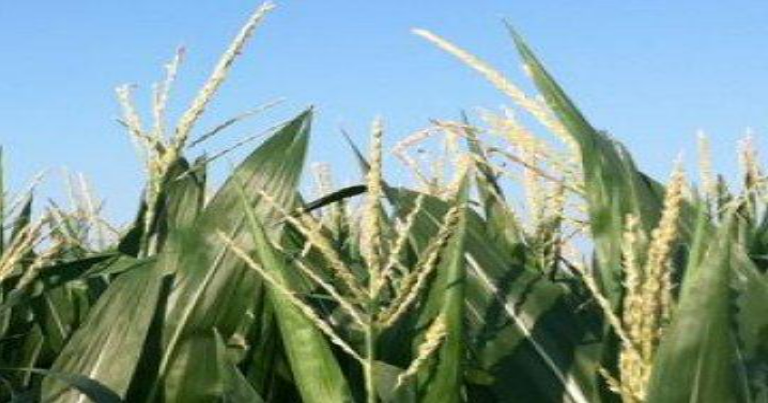
Bees are the most important pollinators of our fruits, vegetables, and crops including the alfalfa hay that feeds our farm animals. Honeybees and thousands of native bee species rely on the flowers they pollinate for good nutrition and health. Bees are being pushed to the tipping point by various factors, such as disruption of natural habitats, diseases and parasites, and widespread overuse of pesticides. Producer knowledge of basic bee biology can help protect bees from pesticides. Bees forage throughout the growing season from sunup to sundown when temperatures are above 50 to 55 degrees F. Honeybees fly an average of 2 miles on each foraging trip, searching for flowers over an 8,000-acre area surrounding the hive or apiary. Native bees generally fly within .5 mile of their nest. If flowers are blooming, bees will forage on them. Beekeepers cannot close up the hive during a pesticide application because the bees will suffocate. Moving the bees is not a viable option because bees return to their original site unless they are moved out of their foraging range, which is more than 3 miles away. Locations to place beehives are difficult to come by, and it is even harder to find locations where the bees are out of range of pesticide application. In a July 3, 2013, article in the NDSU Crop and Pest Report, Janet Knodel provided several general recommendations for reducing pesticide risks to pollinators:
Honeybees and native bees visit the flowers of soybean and many flowering weeds growing in and near soybean fields. As soybean aphid populations continue building throughout the state, aphid management needs to take these pollinators into consideration. The University of Minnesota recommends making treatment decisions based on scouting program (i.e., getting into the field and counting aphids) and the following economic threshold for R1 (beginning bloom) to R5.5 (seeds expanding in pods) soybeans: Treat if populations are increasing, the majority (at least 80%) of plants are infested, and average aphid counts exceed 250 aphids per plant. This threshold can protect yields, reduce costs, conserve natural enemies of aphids and other pests, and reduce the risk of pests developing resistance to pesticides. Treating soybean aphid populations when they exceed this threshold will minimize unnecessary pesticide applications and reduce pollinator exposure to pesticides.
Honeybees and native bees can be found foraging in cornfields, especially when pollen is available during tasseling and silking. Pesticide applications made during these growth stages may put pollinators at risk. The emerging problem of corn rootworm resistance to Bt traits may result in increased pesticide applications during these crop growth stages when the adult rootworm beetles are active. Furthermore, these growth stages are critical for protection of sweet corn against certain caterpillar pests. Consider pollinators when making management decisions for certain corn pests. When using pesticides, always read and follow the label directions. Labels for some products/formulations with high toxicity to bees will provide specific directions for minimizing risk to pollinators. The label is the law. Keeping these recommendations in mind will help you to protect honeybees and other pollinators while you use pesticides to protect your crops.
A Prairie processor’s ambition to make high-value food-grade proteins from cold-pressed canola has hit the bottom of the bin. Toronto-based BioExx, at its Saskatoon plant, has tried to commercialize Isolexx, a canola protein isolate, and a hydrolyzed canola protein dubbed Vitalexx, while selling food-grade canola oil and feed-grade canola meal. Judge Frank Newbould of the Ontario Superior Court of Justice granted the company creditor protection Tuesday, running until Oct. 31. In BioExx’s application Monday,the company’s lawyers described it as having been “unable to commercialize its technology or conclude agreements with strategic partners who would assist it in doing so.” The company and its Saskatoon arm, BioExx Proteins of Saskatoon (BPS), were listed as having liabilities totaling about $13.35 million. BioExx said creditor protection was needed to allow for the launch of a sale process under the oversight of its monitor (BDO Canada), retain “key employees who increase the value of the assets to be sold” and “maximize recovery” for the stakeholders.

In a brief announcement Tuesday, the company’s board said that “after consideration of the available alternatives,” this option was found to be “in the best interest of stakeholders.” TSX trading of BioExx’s common stock (TSX: BXI) has now been halted, a move expected to remain in effect pending the stock’s delisting, the company said. BXI was trading at 0.5 cents per share last Friday, interim CEO John MacDonald noted in his affidavit Monday. The company on July 22 closed a $3.5 million deal to sell off some equipment from its Saskatoon plant to BidItUp Auctions Worldwide. BioExx then said it expected to close a deal for its Saskatoon building, land and “certain canola crushing assets” by the end of this month to Virtex Grain Farms for $7.5 million. The first sale was expected to go mostly toward “partial payment of a loan” from its first secured creditor.
BioExx in late July hired Ernst and Young Orenda Corporate Finance to explore a possible sale of the company and to do so “if feasible and subject to shareholder approval.” In that process 13 different buyers entered non-disclosure agreements toward a possible sale but no offer was ever made, MacDonald said. The company had sought a buyer after a deal with an unnamed “potential strategic partner” fell through. The unnamed partner, BioExx said, had opted to favour “a lower risk and more immediate focus on other vegetable proteins that are already commercially available.” BioExx had said in July it would still pursue “other existing opportunities” such as a proposed plant in Europe, but wanted to examine a possible sale “while sufficient financial resources exist to undertake such a process.” The company is also now in default on its repayments of a $2.958 million contribution put up in 2009 through the federal Agri-Opportunities program, due to be paid down in full by the end of September 2017.The company launched in 2003 with what it described as a “groundbreaking, proprietary technology to naturally process oilseeds into food-grade oil and proteins, at low temperatures, without the use of noxious solvents.”
Potatoes are typically grown under irrigation, on sandy soil and with plenty of commercial fertilizer. It’s the perfect setup for severe acidity and a perfect scenario for lime treatment. The three main factors contributing to severe acidity are irrigation, high fertilizer rates and soil with a low pH to begin with, according to independent agronomist Trevor Thornton of Crop Care Consulting in Manitoba.
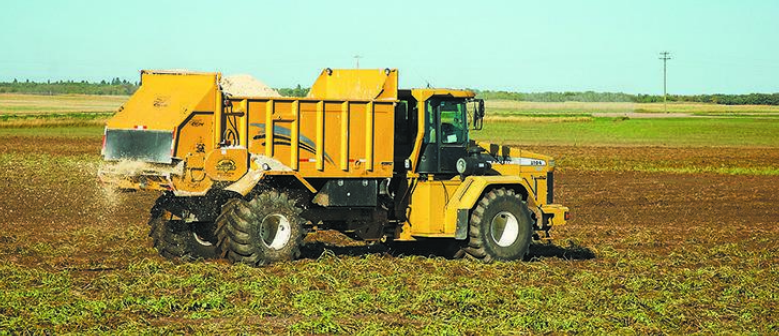
Thornton has been working with Manitoba potato growers for 10 years. In that time, he and his staff of four agronomists have fine-tuned their expertise in using lime to up-grade severely acidic soils. “By severely acidic, I mean soils which had a pH of 4.5 when we started working with them 10 years ago. I’m guessing they were 5.0 to 5.5 pH initially,” says Thornton. Many fields started with acidic soils because of the way the parent material was laid down. There was no human fault. However, in Thornton’s opinion, growing crops with a high nitrogen demand made the situation worse. Thornton said that in dry conditions, a low pH like 4.5 allows hydrogen to build up in the soil, where it acts like a torch on plant roots. Nutrients might be right next to the roots, but the roots can’t access them. The situation is only slightly better in an irrigated field.
Potatoes are a high-value, high-input crop, which is why Thornton carries out an intensive grid sampling program with his clients. On potato land, he uses a one acre or two acre grid system. On all other crops, he uses a five acre grid. “With so much cash on the line, it’s important that our variable rate prescription maps are accurate. I’ve got fields where the highest pH and lowest pH are right next to each other. We find things that zone sampling would never pick up. You need to know those things if you plan to apply lime. “You must put lime down with a variable rate prescription map. If you put too much lime where it’s not needed, you just create another problem for yourself on the other side of the pH scale.” Thornton emphasized that if you don’t use enough lime, you’re missing some cash opportunities, not only with the potatoes but with other crops in the rotation.
A typical rotation employs fall rye or spring wheat after potatoes and then a canola crop. Some growers have started putting soybeans, edible beans and corn into the mix, although corn may not be the best option. “Corn demands a lot of nitrogen fertilizer and that’s not something you want to do if you’re already fighting acidic soils.” After a decade of liming low pH soils, how do the numbers look? “Grain yields in our clients’ fields have increased 15 to 20 bushels per acre where we’ve applied lime treatments with a variable rate system. “Of course, grain is just part of the rotation. Potatoes are the main crop. The lime treatment has increased the potato yield by as much as 80 hundredweight per acre. Plus, internal quality defects have dropped significantly.” But none of this good news comes without a price. Although Thornton only applies lime to areas in a field where it will have a significant economic impact, the high end of that scale might be as much as two tonnes of lime per acre.
Thornton says he cannot quote exact prices because of all the variables involved in liming a specific field. However, he can give ballpark figures. “If you have some areas in a field that require the maximum rate of two tonnes per acre, you can figure $30 to $40 per tonne, depending on delivery distance and things like that. “So, yes, that’s $60 to $80 per acre. But keep in mind that not every field is at the high rate and few fields require full coverage. That’s why I insist on a variable rate. “And then consider that your treated acres might give you 15 or 20 bushels more wheat and 80 hundred weight more potatoes.”A review of the Internet shows dozens of different types and sources of agricultural lime. Municipal water treatment plants utilize lime as one of the agents in purifying potable water for towns and cities. This is the source Thornton uses for field lime.
The slime-like lime is trucked to the field in a regular dump box truck and applied through an Ag Chem twin spinner floater truck designed in the U.S. specifically for this material. “The stuff we get is 50 percent moisture, so it’s not really sludge, but it’s not really granular either. Standard ag grade lime is 60 percent through a 100 mesh screen. It takes about three years to react with the soil. “The stuff we get is 100 percent through a 100 mesh screen. It’s an incredibly fine grind. That also means it’s soil reactive immediately, so you have to be careful not to apply too much at a time. That’s why we have to use variable rates. “It’s a challenge to spread through a Valmar or a regular floater. We tried manure spreaders, but it’s too difficult to control the rate. The Ag Chem spin spreader has variable rate, and it’s designed for this material.”
Weed scientists and agronomists frequently intersperse the terms of pesticide modes of action (MOA) and sites of action (SOA). What do they really mean? Although the two are used interchangeably, they mean differ things.
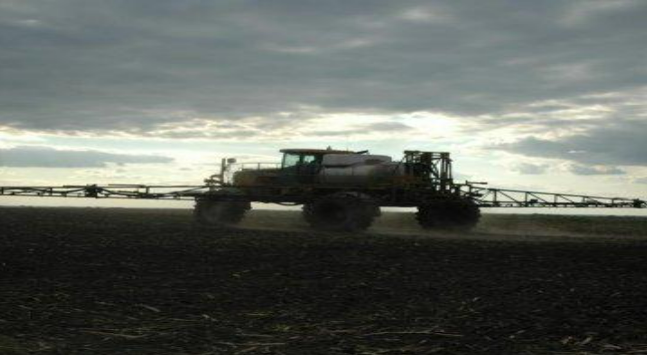
MOA refers to how a pesticide kills a pest. For example, select, a soybean herbicide, curtails lipid synthesis in targeted weeds. Thus, its mode of action is a lipid synthesis inhibitor. It works by binding to the Acetyl-COA carboxylase(ACCase)enzyme. Thus its site of action is as an ACCase inhibitor. Herbicides can also bind to specific proteins in a weed, disrupting plant processes. Most herbicides bind to a single protein. “When a herbicide bins to a single protein, that protein no longer functions,” says Bob Hartzler, Iowa State University Extension weeds specialist. “When it doesn’t function, the biological process doesn’t function, and it (weed) dies.”
Midwest farmers woke up to some unusually unwelcome guests last summer in the form of spider mites. More commonly found in Western soybean and grain sorghum fields, spider mite populations suddenly exploded last summer, and the insects feasted on soybean and cornfields stressed by the drought. They may be tiny (you need a magnifying glass to see them), but fields hit hard suffered large yield losses ranging from 40% to 60% in soybeans and 20% to 30% in corn.
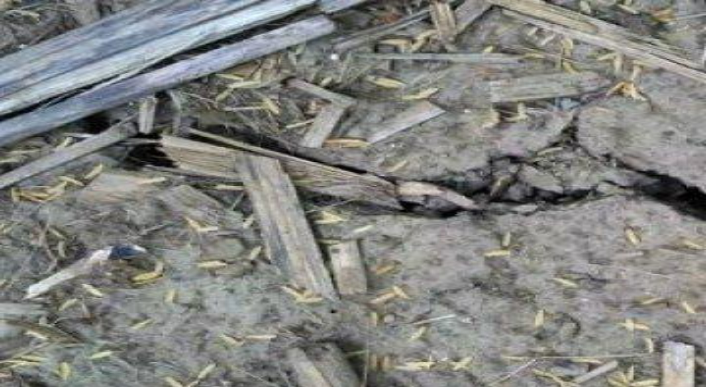
Last summer offered ideal conditions for spider mite eggs, nymphs, and adult mites that seemingly emerged all at the same time in a massive population explosion, says University of Wisconsin entomologist Eileen Cullen. Weather wake-up call unusual weather patterns – whether they be drought or deluge – are a tip-off to potential bug or disease problems. For example, an unusually mild winter (like the one a year ago), severe drought (like last summer’s), or prolonged periods of rain and cool temperatures in the spring are an advance warning to anticipate certain pest or disease problems. The relationship between disease and weather cycles is the base of many prediction models that can be used to advise growers days or weeks before the onset of a disease, says Kansas State University plant pathologist Karen Garrett. She says research has been successful at tracking the emergence of bugs based on weather patterns. Armed with such weather information this spring and summer, you should head to your fields and “scout, scout, scout,” urges Ron Hammond, Ohio State University.
As insects are cold-blooded, they respond directly to temperature changes. Certain insects favor hotter, drier weather, says Sue Blodgett, Iowa State University. So an unusual temperature pattern (warm winter followed by a hot spring, for example) can be used with considerable accuracy to predict the emergence of certain insects. A good example of this happened last year. A mild winter was followed by a warm spring followed by a hot, dry summer. “The mild winter improved the survival of some insect species, such as corn flea beetles, bean leaf beetles, soybean aphids, and white grubs that overwinter in Illinois,” says Mike Gray, University of Illinois. Last year, a number of bugs – such as black cutworm, true armyworm, and potato leafhopper – migrated from Southern areas to the Midwest due to winter weather that encouraged these bugs to take a Northern vacation. When they arrived, they were able to feast on crops stressed from a drought, which made the plants less able to fend off feeding. There was another telling feature of the spider mite invasion. The fungus that attacks them (and keeps the mite population in control) was suppressed due to dry weather.
The relationship between weather patterns and the emergence of certain diseases is even more certain. So much so that disease outbreaks can be predicted one to three weeks or more in advance, report plant pathologists at the University of Illinois. A partial list of diseases that can emerge during a hot, dry summer (particularly following a warm winter) include common smut (in corn) and charcoal root rot (in corn and soybeans). Diseases likely to occur as a result of a wet, warm spring and summer include foliage diseases, stalk rots, eat rots (in corn), phytophthora root and stem rot, and pod and stem blight (in soybeans). There is no one piece of advice that covers all weather situations when it comes to predicting the onset of bugs or diseases in your area. Your best bet is to seek advice and warnings from your state agricultural agronomists and area crop consultants.
Despite a large U.S. soybean crop, the global ratio of corn to soybeans is still wide, meaning South America needs to produce a strong crop this season. “The world needs more soybeans relative to corn,” Karl Skold of Bunge North America told the Cereals North America global grain conference in Winnipeg. “We need to get back to the normal relationship between corn and beans.” Looking at the U.S. soybean crop, Skold said bean yields were consistently good in most areas and there is currently strong demand for the U.S. product.
U.S. soybeans are in good condition in the eastern U.S. Corn Belt; the only places with below-average beans are in the western U.S. Corn Belt, he said, noting soybean sales have been up 43 per cent from last year due to strong Chinese import demand. “I’m surprised how strong demand is this fall for beans,” he said, but noted the Chinese “are smart buyers who want food security. It’s been a pretty strong start for China.” However, U.S. soybeans only tell one half of the story. South America is the world’s other major producer and production is expected to be much bigger this year because of the strong soybean prices compared to corn. “Planting numbers will go up in Brazil,” Skold said. “In Argentina, rains have also stabilized bean ideas.” It’s expected Paraguay, the U.S., Brazil and Argentina will produce a record amount of soybeans by the time harvest is completed in South America in 2014, Skold said, adding that ending stocks will be “rebuilt.”
Farmers know their calibration is off when they run out of seed and fertilizer 20 acres before the field is finished or too much product is left over when they’re done. Either way, it’s costly and cuts into seeding efficiency, says Owen Kinch, field research manager at Seed Master. “Our new Auto Calibration maintains one percent to three percent accuracy, regardless of changing conditions,” said Kinch.
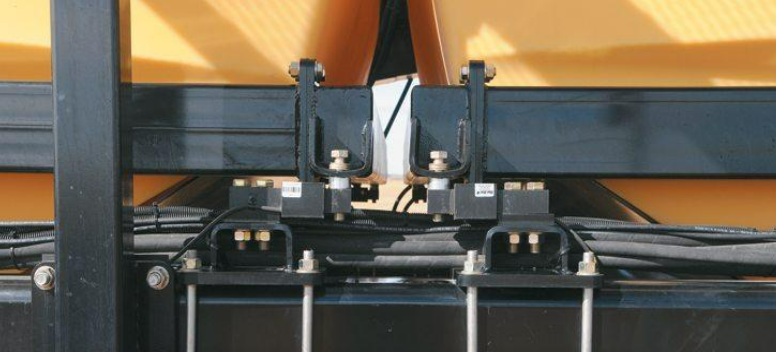
“Most farmers are happy if they can dial in five to eight percent. Some people give up trying to tune their meters and go seeding when their machine is off by 20 percent. We get one to three percent by using real time data from the load cells. Weight information is generated by the load cells anyway, so we simply tap into it and feed it to the Raven Viper Pro in-cab monitor. “The Auto Calibration software continuously reads the actual weight loss in each tank and compares that to how much weight should be lost if the calibration was perfect. “Then it makes the necessary metering adjustments either up or down, spins the rollers faster or slower to move it closer to perfect.” The program becomes more accurate with more acres because an increasing amount of ground-truth data is fed into the system. A heavy bulky product, such as granular fertilizer going down at a high rate, gives the system enough feedback so that it self-calibrates quickly and accurately, while a light weight product, such as canola seed going down at a low rate, takes more acres to dial in.
Kinch said the indicated weight shown on the in-cab monitor is not necessarily a real number because it is based on catch test calibration. The farmer spins the meter roller and catches seed or fertilizer. Each revolution spits out a specific amount of product. That measurement is used to adjust the metering system, but it’s seldom good enough for accuracy under eight percent. “More acres, bigger samples and more data lead to greater accuracy.” As well, Auto Calibration eliminates the need for farmers to do their own math, which can lead to errors. “I know from my own experiences doing metering calibrations that it’s easy to mess them up. You think you’ve done it correctly, but then you go out and put down double the seed or double the fertilizer. Or you don’t put down enough. When you realize what you did, you wonder how much that mistake cost you so far today. It happens.” Auto Calibration software feeds into the Raven Viper Pro, which is standard on Seed Master. It will be a standard feature on all SeedMaster Nova XP tanks next year and is available as a free upgrade on all tanks with load cells going back to 2011.
You've likely heard the Las Vegas advertising catch phrase, "What happens in Vegas, stays in Vegas." There's a twist on that line when it comes to mixing spray solutions. Mixed properly, pesticides, adjuvants, and drift-reduction additives pass flawlessly from the mixing vat and inductor into your sprayer and onto your crops. This minimizes field trips and off target movement while maximizing pest control or not. What happens in your sprayer tank may not stay that way. "Anytime you put something in the tank, it changes the dynamics of the spray solution," says Jim Reiss, vice president of agricultural chemistries at Precision Laboratories, pictured above.
Remember the old compatibility test of the Mason jar and kitchen spoon? That's when farmers poured a sample of spray mix ingredients into a Mason jar and mixed it with a spoon. If the mix mimicked jelly or curdled milk, that meant it was added in the wrong order or was incompatible. If the mix and mixing order were right, the ideal form would range from milky white to clear or translucent. jelly recipe Nowadays, applicators have swapped the Mason jar for mixing inductors that convey the mix to the spray tank. Unfortunately, compatibility testing is a lost art, says Reiss. Too many applicators just dump products into the inductor with sometimes terrible results. Suppose you want to add a little zip to glyphosate in order to control some tough weeds in corn while minimizing drift. Here's the mix and the order of herbicides and adjuvants you pick:
Since the glyphosate product, Roundup PowerMax, is the main product, you'd think that would be the first product in the inductor, right? Wrong. "It actually would look OK until you added it to water, "says Reiss, "Then it would start gelling as it entered the sprayer."
Here is the right order:
Adding chemicals separately is also key, since improperly mixed gelled products clog sprayers. "Inductors are meant to be giant funnels, not mixing vats," points out Reiss.
Sprayer ownership has many advantages. "That way, I'm not waiting for someone else to do it," says Scott Church, who farms with his son, Jared, near Catlin, Illinois. It enables you to get the most out of good weather conditions for spraying and to shut down during suboptimal weather. However, sprayer ownership means mixing your own spray products. That's why the Churches have been working with Reiss and Chad Barnes, an Illini FS sales representative, to develop better spray mixes and to boost their spraying season efficiency. Improper mixes cost time and money. Reiss points to a Southern Illinois University analysis showing that a day of downtime at a 400-acre-per-day spray rate leads to lost revenues of $9,600. That assumes 2-inch daily weed growth that clips soybean yields by 2 bushels per acre at $12 per bushel. Higher prices mean heavier losses, Reiss adds.
It's also important to spray pesticides one type at a time. "We now have scenarios where people want to mix herbicides, fungicides, and insecticides together," says Bob Wolf, coowner of Wolf Consulting and Research, Mahomet, Illinois. "That is something I never recommend." That's because each chemical class may differ in optimal droplet size. A glyphosate and fungicide mix for simultaneously controlling weeds and early-season diseases may save time short term, but their optimal droplet sizes won't click. Glyphosate works best when applied in a very coarse droplet. This ranges in size from 401 to 500 microns, about the thickness of a staple. Since it's a systemic herbicide, glyphosate moves through a weed at contact. That nixes the need for coating the entire plant. Large droplets also aren't as prone to move off target.
Meanwhile, fungicides are contact pesticides that require fine droplets to evenly coat and to protect a crop. Although the fine droplets ensure crop protection, they are also prone to drift. Their width hovers around 150 microns, about the size of sewing thread. You can't have it both ways. For optimal efficacy and minimal off-target movement, Wolf advises that you apply each pesticide class separately.
Making sure you have the right mix in the right order is easier with a free app that Precision Laboratories has developed. The Mix Tank 2.0 app works on Android and iPhone smartphones. Mix Tank 2.0 has a database of more than 1,100 crop-protection products from over 17 manufacturers, and it continues to increase in size. The app is designed to assist applicators with the proper tankmixing sequence and to maintain accurate spray logs for record keeping. "This tool is easy to use and helps prevent application problems, saving time, money, and resources, "says Dan Ori, marketing manager for Precision Laboratories. "Mixing sequence does matter," says Reiss. "There's a right way and a wrong way to do it."
Canadian canola crush margins are currently at some of their best levels of the past year keeping domestic processors showing good demand in both the futures and in the cash market. Crush margins provide an indication of the profitability of the product values relative to the seed cost when processing canola, with exchange rates also factoring in to the equation. As of Tuesday (Nov. 26), the canola board crush margin calculated by ICE Futures Canada was $110 above the nearby January contract and $98 above March. The current margins represent an improvement of over $10 compared to late October and are almost double the margins being reported at this point a year ago, when the margins were only about $60 above the futures. Weakness in the Canadian dollar which was below US95 cents on Tuesday along with strength in many global vegetable oil markets, and the fact that the rangebound canola futures market has lagged CBOT soybeans to the upside recently, have all contributed to the favourable crush margins, according to one canola broker. Crushers, he added, were offering some of the best basis opportunities in Western Canada.
Dead-drop serious. “Two years ago, I said we were on the edge of the precipice (regarding resistance),” says Mike Owen, Iowa State University (ISU) Extension weeds specialist. “Now, we have pretty much stepped off the edge.”
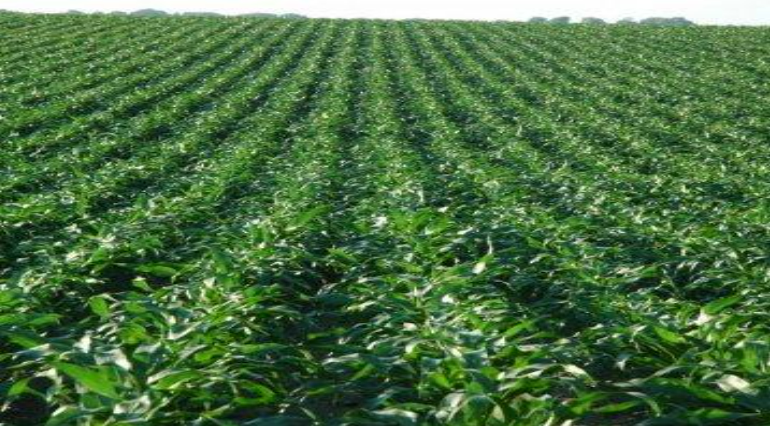
Three years ago, one third of Iowa soybean fields surveyed had glyphosate-resistant waterhemp populations, Owen says. He believes it's worse in 2012. By now, those fields have been rotated with corn, making it a corn problem, too. More disconcerting is multiple-mode resistance. In Illinois, scientists have identified a waterhemp biotype that resists triazines, ALS and PPO inhibitors, and glyphosate. It's expected that scientists will find a waterhemp biotype this year or in 2013 that resists these modes of action and HPPD inhibitors, says Pat Tranel, University of Illinois (U of I) weed scientist. What to do? Rotating modes of action is a good step. Applying them at different times, such as a preemergence application followed by a postemergence one, is better. Ditto for planting a competitive crop stand. You may also want to consider cultivation on thickly infested areas, says Owen. “Each tool may be individually weak, but many tools working together can have a strong cumulative effect,” adds Matt Liebman, an ISU agronomist.
By itself, very little. “A 100° day doesn't have an adverse effect, assuming there is ample moisture in the soil,” says Elwynn Taylor, ISU Extension climatologist. Strung together, though, hot days can clip yields. The fourth day of 94° temperatures and above accompanied by 50% humidity chops yield potential. “Even if you have good moisture in the soil, you lose 1% of yield,” says Taylor. “The fifth day, you lose 2% more yield; the sixth day, you lose an additional 4%.” Problems worsen if this occurs during silking. Temps at 94° or above – combined with 50% humidity on the fourth day – clip yields 3% rather than 1%.
Disease, insects, or nutrient deficiencies may first cross your mind. In many fields last year, this was the telltale sign of drought damage. “Last year, people thought it looked like potassium or nitrogen deficiency, but it was water deficiency,” says Emerson Nafziger, U of I Extension agronomist.
Very little. In fact, it's not uncommon for drought-stressed corn to have a high test weight per bushel, says Bob Nielsen, Purdue University Extension agronomist Kernel weight is a much bigger yield-determining factor. It's one reason USDA yield forecasts increased over the course of the 2011 growing season. “There were better measures on kernel weights as the season progressed,” says Roger Elmore, ISU Extension agronomist. “Test weight doesn't correlate to yield, but kernel weight does.” Yield is determined when kernel weight is multiplied by kernel number, says Nafziger. “If test weight alone was important, popcorn with a test weight of 62 pounds would yield 400 bushels per acre,” he says.
It's tough, particularly if it hasn't happened by early August. “When you see all that sunlight hitting the ground, that sunlight is not doing any good,” says Nafziger. By then, a spotty stand translates into scrawny yields.
This marked the third week in a row that grain prices surged higher, responding to intense drought conditions in the Midwest and quickly deteriorating crop conditions across most of the major growing regions. Since mid-June, Chicago wheat rallied 2.16, Kansas City 1.99, Minneapolis 1.97, corn 2.05 and soybeans 2.34. The corn crop is the hardest hit, particularly with the early plantings, as pollination across much of the nation is occurring during this intense heat. Average yields are dropping daily and production estimates are quickly approaching levels that require serious rationing.
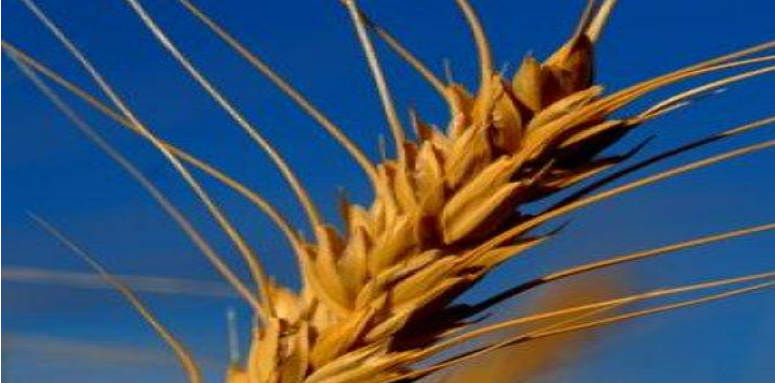
The rationing does appear to be underway with several ethanol plants shutting down and corn export sales abysmal for the last few weeks. The wheat and corn markets have seen a number of cancellations from countries who had offered tenders but experienced sticker shock when the offers were presented. It seems the only country not slowing down on purchases is China, who booked over a million tons of soybeans this week. They have no intention of just standing by and watching supplies get away from them. Informal released their latest yield estimates on Friday, taking corn down to 153.5 bu/acre, down 1.4 from their latest estimate. USDA’s last month estimate was 166.0. Total corn production was projected to be 13.64 billion bushels, down 1.15 billion from USDA’s last estimate.
Informal also lowered soybean yields slightly to 42.0, down just .7. Production is projected at 3.161 billion bushels, down 44 million from USDA. All wheat production was estimated by Informa to be 2.287 billion bushels, up 53 million from USDA. USDA will release their updated estimates on Wednesday, July 11. Most in the trade expect only slight reductions in yield for corn, and we may not see any yet for soybeans. Wheat markets have been just as robust as corn, even though they don’t get much of the headlines. Understandably, the focus is on corn and beans as the weather wreaks havoc but wheat has a few bullish fundamentals in its camp as well.
Production losses in China and the Black Sea region have whittled world supplies lower. Exports out of both Ukraine and Russia will be sharply lower from last year. Now with wheat clearly headed for another year of feed grain usage, it looks like US and world stocks will continue to decline, which should support prices for the next year.
That said, those price targets might be reached much sooner than a year down the road. Indeed, in weather markets the rallies tend to be very fast – and big. While it’s difficult, it’s important to stay ahead of the market in these kinds of trading environments. For sellers, it’s always a good idea to have orders in place well ahead of time, and don’t be afraid to shoot for price levels that seem way up there – in weather markets prices can go way further than you’d expect. These kinds of markets are also volatile; one day sharply higher and the next giving much of it back on any hint of improving weather – like we saw on Friday. The weather forecast calls for temps to moderate across the Midwest with some chances for rains. Most weather guys suggest the rains will be light, but the improving forecast was enough to press prices lower. Gaps were tested and so far have held, with wheat settling in those gaps. Corn and beans did not get into their gaps and appear to have more technical support. However, with wheat having plenty of chances to fill their gaps and not doing it, it does suggest there is solid buying under Friday’s lows as well.
While weather markets usually blast off and flame out quickly, it is unlikely that this weather market is over just yet. Cooler temps are one thing, but the lack of soaking rain will still keep stress on the crops and the forecasts call for temps to rise again late next week. It’s a day-by-day thing, but it looks like we should still see much more upside to this market before it’s all over. Most likely, this weather market will be all over by the end of July, which could be in time to salvage some of the bean crop, but will come much too late for corn. This publication is strictly the opinion of its writer and is intended solely for informative purposes. It is not to be construed, under any circumstances, by implication or otherwise, as an offer to sell or a solicitation to buy or trade in any commodities or securities herein named. Information is obtained from sources believed to be reliable, but is in no way guaranteed. Futures and options trading always involve risk of loss. Past performance is not indicative of future results.
"This bug eventually has found a way to resist nearly every control technique we throw at it," says Bruce Hibbard, a USDA-ARS research entomologist based at the University of Missouri. To make his case, Hibbard outlines the history of man's fight against corn rootworm. Bottom line: This pest doesn't give up easily. Our latest weapon, Bt technology promises to deliver a knockout punch bred inside the plant itself. However, it’s showing vulnerability. Corn in some Corn Belt fields are succumbing to yield-robbing root damage, even when a Bt hybrid is planted. Bt will play a strong role in rootworm control for years to come, says Hibbard. Still, if we want to maximize its long-haul effectiveness, we may need to revert to previous technology in multiple-mode warfare. Here's his checklist of rootworm control technology - some from the past - that can help reduce the overall levels of infestation.
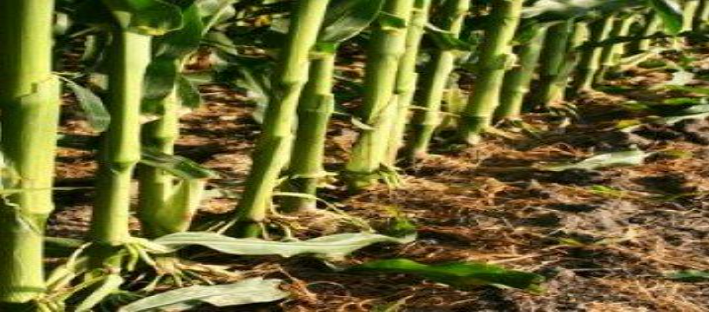
1. Crop rotation. For the first 50-plus years of the last century, this was our only rootworm defense. "It breaks the cycle of the pest," Hibbard explains. Rootworm pupates into the adult stage late in the growing season. Females then lay eggs that overwinter and hatch again the next spring. Corn-on-corn really plays into their game plan. If no corn roots exist in the field due to planting soybeans or another crop, the larvae starve and the population is greatly reduced. In many places, rootworms have found a way to get around crop rotation, but not completely. Usually, rotation helps to reduce root feeding. If it is possible to rotate crops, you may have to do that to help maintain high corn yields, Hibbard says.
2. Granular soil insecticides. This second-generation control technology started back in the 1940s and 1950s. Initially, farmers broadcast chlorinated insecticides as a seed treatment. Resistance developed relatively quickly. Organophosphates and carbamates were then developed, but they didn't offer an easy system to manage. They also were relatively expensive, so farmers banded them in the row furrow with the planter.
This technology and the chemicals are as effective as ever, says Hibbard. Rootworm has shown little or no resistance to the carbamate class of chemicals in 40 years of use. Banding provides a natural refuge where rootworm can survive between rows outside the insecticidal bands. “That resistance has not developed to this management tactic documents that refuges work for delaying resistance. There are places where you can use it to great advantage now," he says.
3. Rotate to a different mode of action. This tactic is similar to rotating weed chemicals to prevent resistance development. With Bt corn, there are now second- and soon-to-be third-generation Bt modes of action that work in different ways than the original Bt. Thus, rootworms that resist one Bt mode are susceptible to another. If you are rotating crops and soil insecticides where possible, Hibbard advises also rotating the type of Bt corn that comes in your seed package. The goal is to keep rootworm one step behind you in their fight for survival.
4. Stack up. If rootworm resists a Bt mode of action, don't plant seed with solely that Bt mode, he continues. If crop rotation or granular soil insecticides are not possible, plant Bt corn hybrids that "stack" the modes of action with more than one source. That improves the effectiveness, and fewer rootworms should survive to reproduce. Your seed dealer can help you chose these multiple-mode hybrids. And, Hibbard says, some help is on the way for this one in the form of new weapons. Monsanto, Syngenta, and Bayer CropScience are working on new modes of action coming down the pike later this decade. "The bottom line is that there are more management issues to rootworm control than ever. There are issues with these options in some areas, and you need to manage around them," Hibbard says. "Our best new techniques don't always work, and if we use them alone, they won't work forever. It is going to take great diligence from all of us, growers and scientists. Understand what is happening in your own fields, and manage root worm populations accordingly."
Future Rootworm-Resistant Products Like it or now, resistance is inevitable for a control that is heavily used. That’s why companies continually research new modes of action to replace products showing resistance. Here’s what’s new on the rootworm-resistant trait front: Bayer CropScience is developing a new generation of broad-spectrum insect traits featuring multiple action modes later this decade. Part of this research is a mode of action for a corn rootworm trait that is completely novel compared to current control measures, says Brian Vande Berg, Bayer CropScience senior scientist for corn and soy research.
Syngenta is planning a new mode for rootworm resistance on tap for 2014 or 2015. It’s now called Event 5307. It expresses the eCry3.1Ab protein that has an action mode that binds differently to the insect than other rootworm traits. Syngenta plants to stack it in its AgrisureViptera trait package and refuge stacks in 2014, pending regulatory approval. It will be teamed with Syngenta’s Agrisure RW trait, giving the stack two rootworm modes of action. “It uses a different technology that is more efficacious, a game changer in the rootworm business,” says Dane Bowers, technical support representative for Syngenta.
Monsanto has a corn rootworm technology in the works for later this decade that will use a Bt protein and an action mode using RNA interference to kill corn rootworm. “The complementary level of control between the Bt protein and RNA interference technology will bring unprecedented control for corn rootworm,” says Bob Riter, vice president of breeding technology for Monsanto.
Most of the state of Kansas is under the worst drought conditions it's seen in years. And, right now's a bad time for that to be happening, with many farmers there starting to look ahead to planting wheat in the coming weeks. That means most will be planting their 2013 wheat crop in extremely dry soils, something that could, if not handled correctly, slam yield potential for that crop down the road.
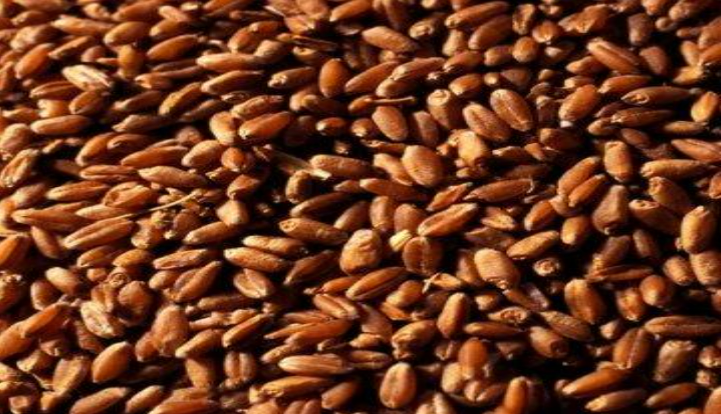
Before even turning a wheel on the drill, it's important to get a feel for what Mother Nature's plans are first. If the dry conditions are expected to continue, instinct may tell you to plant a lighter population. That's not the way to go, though, says Kansas State University Extension crop production and wheat specialist Jim Shroyer. "If it looks like there’s a good chance the dry weather will continue until at least the back end of the optimum range of planting dates, producers should treat the fields as if they were planting later than the optimum time.
Rather than cutting back on seeding rates and fertilizer to save money on a lost cause, producers should increase seeding rates, consider using a fungicide seed treatment, and consider using a starter fertilizer," Shroyer says. "The idea is to make sure the wheat gets off to a good start and will have enough heads to have good yield potential, assuming it will eventually rain and the crop will emerge late. Wheat that emerges in November almost always has fewer fall tillers than wheat that emerges in September or October." Regardless of variables like plant population, there will still be risks to "dusting in" seed wheat, Shroyer says. If it does finally rain shortly after the wheat's been planted, the crusting could make it tough for the young plants to poke through and emerge. In some cases, the seeds can germinate without emerging at all, just below the surface. One way to avoid this situation is to plant deeper, Shroyer says. Doing so requires you to plant right in the optimal planting window and with the right equipment. And, it's not without risks, either.
"The advantage of this option is that the crop may come up and make a stand during the optimum time in the fall. This would keep the soil from blowing. Also, the ridges created by hoe drills also help keep the soil from blowing," Shroyer says. "Generally speaking, it's best to plant no deeper than 3 inches with most varieties. Under the right conditions, this would result in good stands, assuming the producer uses a high seeding rate and a starter fertilizer, if appropriate. If it remains dry well past the optimum range of planting dates, the producer would then have the option of just keeping the wheat seed in the shed until next fall and planting spring crop next year instead."
Corn harvest conjures up visions of combining pouring golden kernels into an awaiting truck for delivery to the bin. In reality, there's another harvest occurring from the time corn plants break the soil surface. The plants harvest sunlight that fuels photosynthesis, a process that converts sunlight into vital plant nutrients like sugars.
The more photosynthesis plants generate, the more they thrive. Ultimately, this boosts yields. Finding a way to deliver more sunlight to your plants could increase corn yields.
Due to their position in the cornfield, outer rows garner more sunlight. That's what caused Marc Burggraff's yield monitor to jump as the Flandreau, South Dakota, farmer harvested corn on the rows bordering a soybean field four years ago. “On the six rows on each side of the field, the yield monitor read 20 bushels per acre higher than the rest of the field,” says Burggraff. This confirmed what Burggraff had read about outside rows yielding more corn due to increased sunlight exposure. In 2009, he evaluated this on a larger scale by planting intermittent 12-row and 24-row corn strips between matching soybean strips on 90 acres. Positive results did occur, but not across the entire strip. “When we weighed the corn row by row, there was only a yield advantage two rows in,” he says. “After that, the yields began plateauing. Yields for the center rows went back to what corn rows normally would be.” Having more outer rows gave 12-row strips the edge in field-wide tests. In 2009, 12-row strips averaged 195 bushels per acre; 24-row strips averaged 188 bushels per acre. “We found we gained some yield from 24-row strips. But 12-row strips were a better way to go,” says Burggraff.
In 2010 and 2011, he narrowed strips further to six rows in order to compare them to 12-row strips. This worked well. In 2010, the average of a six-row strip dwarfed yields of the 12-row strip by over 40 bushels per acre. That was due to the doubling of outside rows in the six-row setup. In one six-row analysis, outer rows averaged 277 and 291 bushels per acre, respectively. Moving inward, row yields decreased. The innermost two rows garnered 203 and 244 bushels per acre. Another perk was outer rows were 1% drier at harvest. (See chart at right.) Overall, Burggraff says strips boost corn yields an average 10 to 20 bushels higher than they'd normally be. Bob Recker, Waterloo, Iowa, noticed the same corn yield bump as he's experimented with strip intercropping. “The edge of the strips is where high productivity lies,” he says. Ditto for several academic studies' findings. A 1986-1990 Purdue University study showed corn strips with extra population and nitrogen yielded 20 bushels per acre more on average than nonstripped corn (with regular management of that time).
The knock against strip intercropping is the same one that's plagued the practice since it surfaced over two decades ago. Soybean yields take a big hit. The taller corn shadows soybean plants, thus, decreasing the amount of sunlight they garner. In the Purdue study, stripped soybeans yielded 5.9 bushels per acre less than unstripped soybeans. Nor did strip intercropping boost net profits. Soybeans also took a hit in Burggraff's on-farm trial. Soybeans in 12-row strips yielded 6 to 8 bushels per acre less than unstripped soybeans. The soybean slump is a major system flaw, says Emerson Nafziger, University of Illinois Extension agronomist. “One of my concerns is the general emphasis on high corn yields and the lack of attention on the lowering of soybean yield,” he says. “You can't escape the fact that soybeans always lose to corn in the competition for light and water. And when these are limiting factors, soybeans might lose a lot and even more than corn gains.” Strips are also too narrow to form a conclusion on how yields really compare against each other. “In my thinking, that's a flaw. You can say that corn yields were high and soybean yields were not that much lower, but you have no good basis for comparison,” says Nafziger. “It's an interesting topic, but I'm having trouble seeing this as a trend that will sweep the Corn Belt. At the current corn/soybean price ratio, more corn at the expense of soybeans may well make sense. But using strips is only one way – and not logistically a very easy way – to get to more corn in the bin.”
Water hemp to soybean farmers is akin to that obnoxious guest who arrives early at a party and won’t leave as he downs your drinks and gobbles your food. Rather than beer and brats, though, this pigweed family member guzzles soybean yield potential while leaving up to 250,000 seeds per plant for future infestations.
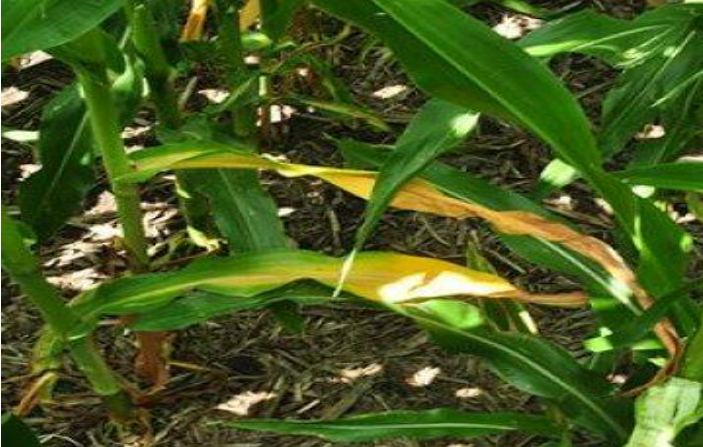
Water hemp showed up again in 2015. “Driving across the Midwest during August, I rarely saw a clean field,” says Dawn Refsell, field market development specialist with Valent. Unfortunately, nitrogen (N) deficiencies in corn and white mold and sudden death syndrome (SDS) in soybeans also joined the party. Here are some ways to savage these stressors in 2016.
Pre-emergence herbicides are a great way to get your soybeans off to a good start. “Not all pre’s are created equal,” says Refsell. “Some pre’s will only work three weeks, while others work six to eight weeks. The longer the residual, the better – especially with herbicide-resistant weeds. You don’t want them to emerge.” Eventually, pre-emergence protection ceases. That’s why timely post-emergence applications must be made. Aim to hit weeds when they are small. “I always tell farmers when they want to apply herbicide on 3-inch weeds to aim to do it when weeds are 1-inch tall, because they tend to be behind on weed height,” says Ryan Lins, a Syngenta research and development scientist based in southeastern Minnesota. This aids control since smaller weeds are more susceptible to herbicide.
Ever think that more intense rains are occurring these days? They are. Peter Scharf, University of Missouri (MU) Extension soil specialist, says 80,000 central U.S. acres, on average, received 16 inches of April-to-June rainfall from 1900 to 1980. That’s now grown to around 200,000 acres annually. That’s also why you’re seeing more N deficiencies. Provided you can get in the field, in-season N applications are a great way to get N to the plant while it needs it. When all years are tallied in MU trials from 2007 to 2014, sensor-based side dressing treatments beat preplant treatments by 245 bushels per acre with 164 pounds per acre less N. If your corn is N deficient due to rainfall-induced losses, though, first dig up some roots. “You have to make sure there is a root system to take in the nutrients,” says Andrew Ferrel, an Indiana-based commercial agronomist for Mycogen Seeds. “If the roots are damaged, a nitrogen application won’t do you any good. Seemingly alive plants can have no roots.” In reality, N isn’t your limiting factor in this factor – lack of roots is.
The good news about white mold and sudden death syndrome is they don’t show up every year. The bad news is they both showed up this year in many fields. Heavy morning dews encourage the advent of white mold but not SDS. Meanwhile, rampant August rainfall doesn’t spawn white mold, but it does promote SDS. This year, both events occurred in many fields. “What the two diseases have in common is they both affect high-yielding fields,” says Daren Mueller, Iowa State University Extension plant pathologist. Unfortunately, tolerant varieties to both fungal diseases aren’t in the cards for 2016. Both exist, but tolerance isn’t at the level of other soybean diseases.
In-season fungicides are an option for managing white mold, although application into the lower part of the canopy is challenging. Cultural practices include rotating to a nonhost crop like small grains. Fungicides don’t work on SDS, even though it’s a fungal disease. Crop rotation to a nonhost crop like small grains is an option, as are seed treatments. This year, Bayer CropScience had its SDS seed treatment Ilevo on about 1 million U.S. soybean acres. “Ilevo and Poncho/Votivo (Bayer’s products for halting seedling diseases and soybean cyst nematodes) work in tandem with good genetics,” says Jennifer Riggs, a Bayer product development manager.
The clock is ticking for Manitoba producers who wish to lay down nitrogen or phosphorous on their fields. Wet conditions in many parts of the province are making it tough for farmers to get their machines onto fields, according to Dan Mazier, president of Keystone Agricultural Producers. “We just drove from Winnipeg to Dauphin on the Yellowhead (Highway 16) and there were lots of fertilizer tanks parked on fields sitting there just too wet to complete,” he said Friday. Producers in the province’s southwest had a good start laying down fertilizer, but north of Winnipeg, many producers were delayed due to late-season hail. “They were behind the eight-ball because in late October, early November, they were still harvesting,” said Mazier, who farms in the southwest at Justice, Man.
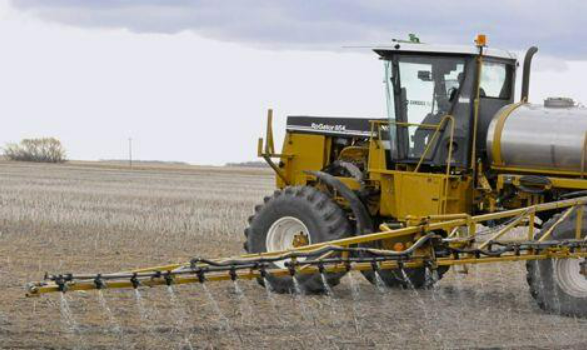
The delay is noteworthy as the province’s deadline for fertilizer applications is Tuesday. From Nov. 10 to April 10, farmers are forbidden under the Water Protection Act from laying down nitrogen or phosphorus during that period, due to concerns over runoff. “Mother Nature makes the ultimate decision, though,” said John Heard, a provincial soil fertility extension specialist at Carman, Man. Last year, producers ran into similar problems with moisture, so the province issued an extension, to give them time to hit the fields. However, Heard said, it snowed just a few days after the original deadline had expired, which effectively closed the door on applications altogether. Ideally, he said, you want the same moisture as you would have for planting conditions, when applying fertilizer into the soil, “in order to do a good job with that machinery and those forms of fertilizer.”
Another factor to consider, he said, is how many producers are inclined to fertilize given present market conditions. “Talking to some dealers, there seems to be a lack of desire to spend money on fertilizer with collapsing commodity prices and maybe not a lot of crop sales yet,” he said. Manitoba Conservation and Water Stewardship is expected to announce Monday whether it will grant another extension.